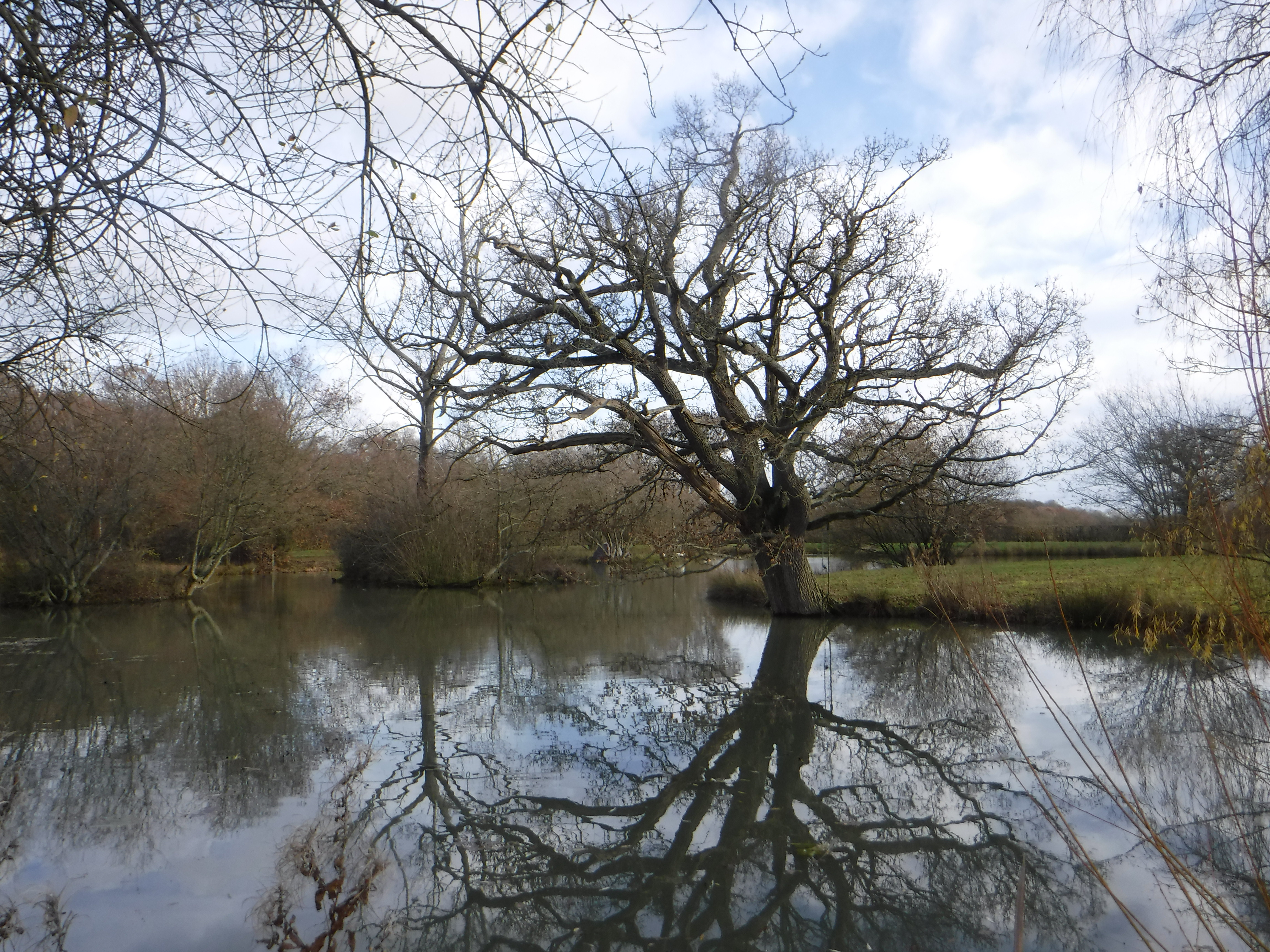
Total monthly rainfall: 163.5 millimetres. Maximum daily rainfall: 23 millimetres (27th). This extraordinary rainfall has brought the lake up to overflow levels and nearly filled the woodland ponds. There were 16 days with 100% cloud-cover for at least part of the day, and 24 days when we recorded measurable rain. Maximum temperature on the warmest day was 15°C on the 1st. Maximum temperature on the coldest day was 5°C on the 14th. There were 13 days when the maximum fell below 10°C.
Most of our records for this month come from the shrubs and trees on the property, and illustrate the progress from autumn into winter. On the 1st the leaves on some of our oaks reached the full yellows and browns of autumn. By the 4th the horse chestnut leaves had turned brown, followed by the beech on the 15th. Last to change the green leaves of summer to an autumn yellow was a hazel in our ride on the 24th. The first tree to turn bare this month was an ash on the 3rd, followed by the field maple and silver birch on the 10th. After this, on the 14th, some of the hornbeam and hawthorn turned bare. On the 19th, following a sharp overnight frost, there was a mass leaf-fall on the horse chestnut, resulting in the tree being bare by the 20th. On the 22nd we found the wild cherry bare, followed by the oak on the 24th.
-
 Bare oak tree
Bare oak tree
Bare oak tree
Bare oak tree
-
 Common darter on oak tree trunk
Common darter on oak tree trunk
Common darter on oak tree trunk
Common darter on oak tree trunk
-
 Red admiral on hornbeam tree trunk
Red admiral on hornbeam tree trunk
Red admiral on hornbeam tree trunk
Red admiral on hornbeam tree trunk
-
 Willow emerald damselfly on kitchen cupboard
Willow emerald damselfly on kitchen cupboard
Willow emerald damselfly on kitchen cupboard
Willow emerald damselfly on kitchen cupboard
https://www.kentfieldclub.org.uk/news/little-barton-farm-wildlife-notes/november-2019#sigProIdd0f42392b4
The month as a whole was rather unfriendly for insects, although we had some interesting records despite this. Throughout the late summer we have relentlessly sought out the willow emerald damselfly. On November 3rd Terry came indoors saying there were no more willow emeralds – not realising that one had come in with him. It was attached to his trousers! It flew around our kitchen and settled on a cupboard door. As it was getting cold and dark outside, we decided to release it the next day. Sadly, it died during the night. Our last common darter dragonfly was seen in sunlight on the trunk of an oak tree on the 29th – leaving open the possibility of our first December sighting!
We saw two species of butterfly this month. A peacock butterfly was perched on brambles during brief sunshine and a temperature of 7°C on the 12th, while a red admiral was sunning itself on the top bar of a field-gate on the 30th, when the temperature was 5°C. We found a ruby tiger moth caterpillar crawling along the top ridge on a chicken ark roof on the 10th – the same day as we found a buff-tailed bumblebee on the garden garrya shrub.
There was quite a lot of migrating wild-bird activity during the month, but no new species for the year. On the 1st, 71 Canada geese arrived to create considerable disturbance on the lake before leaving and returning in various numbers throughout the month. On the 19th 30 herring gulls landed in the field behind our wood. By the 29th the number had increased to about 120, while large groups of 50+ crows flew over our house at various stages during the month. We have yet to see any fieldfares or redwings.
Only a small number of wildflowers remained with us by the end of the month. We had nipplewort last-sighting on the 11th and last common daisy and scentless mayweed on the 17th. This leaves us at the end of the month with small numbers of dandelion, red and white deadnettle, sow thistle, feverfew, herb Robert, and oxeye daisy.

